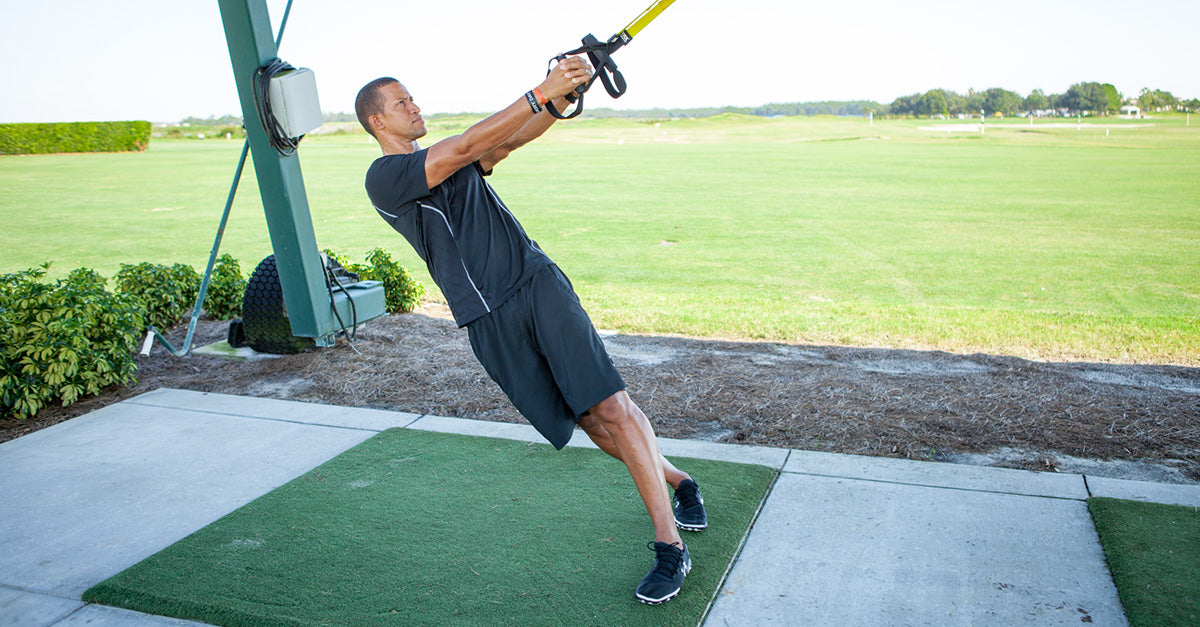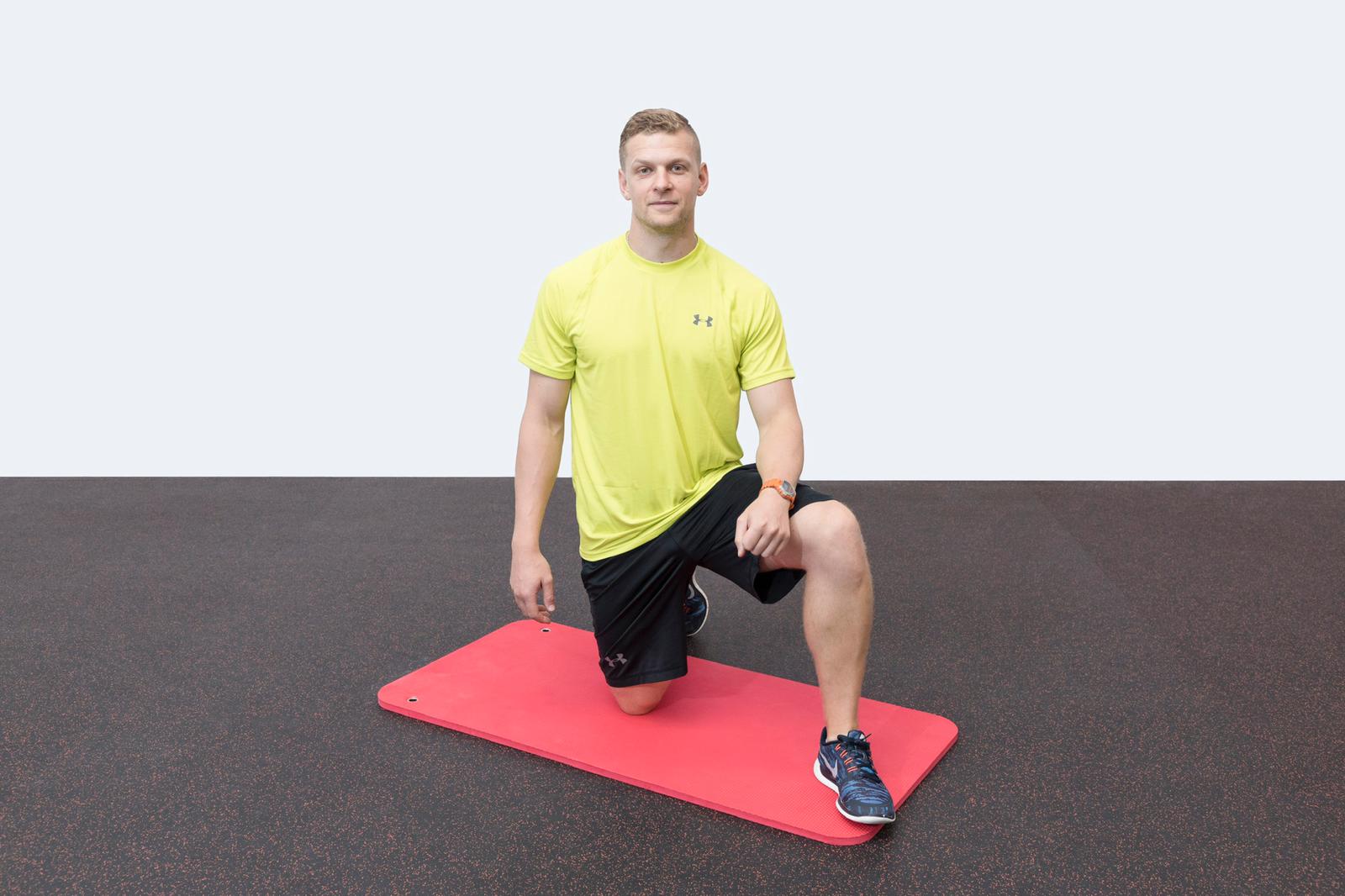The TRX Foundational Movements were created to provide a baseline of knowledge for understanding and teaching movement patterns that are fundamental to both athletic training and to everyday life. Each one--from the plank to push to the pull to the squat, etc--create the base for the hundreds of movements we utilise in any given environment, using any number of training tools (again, these movements map to almost everything we do). We teach these concepts in depth in our TRX education courses in order to enable you to properly and effectively coach any person (regardless of their skills) using any modality.

TRX's movement-based coaching philosophy focuses largely on seven Foundational Movements (Plank, Push, Pull, Hinge, Lunge, Squat and Rotate), understanding that they can and will be expanded on as one progresses. In this blog series, we flip our traditional script a bit and discuss the evolution of these movements. If you haven't had a chance to read the two previous blogs in the series: Part 1, Hinge to Bend and Part 2, Twist to Rotate, we highly suggest you do before diving into Part 3.
If you're all caught up, then let's get into the next instalment: Lunge to Step - step being the "new" movement we'll be introducing.

ABOUT THE LUNGE
In the gym, the lunge is a popular unilateral movement, providing an excellent way to recognise imbalances in strength and/or mobility. The lunge is a versatile exercise that has infinite variations and can be performed in all ranges of motion to target the musculature in different ways. For instance, lunges provide the foundation for walking, running, sprinting, climbing, and most bipedal locomotion. When you improve the way you lunge, you can improve your efficiency in any activity that involves lower body acceleration and deceleration.... Powerful stuff. When lunging, focus on maintaining stability from the ground, through the core, up through the top of the head, to enable mobility in the ankles, knees, and hips. Seems simple enough...
In the TRX Education Journey, we discuss the lunge in our TRX Suspension Training Course (setting the standards on and off the TRX Suspension Trainer), our Functional Training Course (where we expand the coaching to multiple functional training tools), and then again in the TRX Group Training Course (where you learn to coach the standards of this movement in a group environment).
THE STEP VS THE LUNGE
While we discuss the lunge throughout our TRX Education Courses, its counterpart: the step, is a great addition to add to your knowledge base as a coach. The primary reason we teach the lunge first is to ensure we train our clients or athletes how to decelerate (ability to slow movement down as the body lowers to the ground) before we move into acceleration exercises, which is where the Step comes in. While the lunge is used to promote deceleration, the step is the agent for acceleration, driving through the ground and into hip, knee, ankle, and metatarsal extension. In the world of TRX Suspension Training, a good example of the step is the TRX Sprinter Start, where you start from a strong standing plank position, and through the addition of a hip extension, then driving through the ball of the foot, squeeze the glutes ,and extend forward to create acceleration.

Although the step can be taught as a "progression" to a lunge, it can also be used as a great unilateral exercise entry point for those who struggle with knee pain during lunges.
STEP MECHANICS
Step mechanics should mirror squat-to-stand mechanics in that one of the primary cues for both is to drive through the ground as the body extends. To break this down, as you stand, the shin should remain parallel to the trunk; the goal of the step is to create the appropriate amount of range of motion with load distributed through the torso. If we go back to what we learned in our TRX Education Courses, the movement standard for the step is defined by what should be stable and what should be mobile -the spine should be stable and the hips, knees, ankles, and metatarsal heads should be mobile. To bring in even more TRX terminology, an applicable TRX Swing Thought (our imagery based cueing system to help your clients better understand and correct their faults) in the case of the step would be "body like a surfboard", as we want them creating an active plank with a tall torso throughout the movement.


HOT TIP: EARN YOUR PROGRESSION
Stepping exercises should be introduced without any external load. Load can be added when the client is able to perform with optimal mechanics. For instance, keep your eye out for minimal--if any--wobbling. When the client has earned their progression, and adding load is appropriate, you can change the condition by adding dumbbells or kettlebells, and/or by adjusting the tempo. But keep in mind, it's important to change only one condition at a time as to minimise risk and maximise client confidence and proficiency.
SAMPLE "STEP" EXERCISES TO INTEGRATE INTO YOUR WORKOUTS:
TRX Sprinter Start:

TRX Hamstring Runner:

Some additional exercises to try are Box Step-ups and/or Sled exercises.
FINAL NOTES:
When all is said and done, training programs should be tailored to meet the needs of the individual - and every progression must be earned. As the old saying goes, "learn to walk before you run." The same goes for movement sessions. Certainly turning a step-up into a step-up-and-jump combo is more exciting and fun, but with the increased intensity comes increased risk. If you've been through our Education Courses the acronym FLAC should be familiar to you. FLAC stands for: FOCUS on the movement, LEARN the appropriate level of progression, APPLY the training load, CHALLENGE your goals. This is an amazing rule of thumb to take into consideration when you're creating a workout. Bottom line: your goal should be to select the appropriate level of exercises that keep your clients safe, injury-free, and confident during their workouts - and most of all, to always analyse your choices and then determine if the potential "reward" is actually worth it.
We're nearly finished with our TRX Foundational Movement Evolution Series, so stay tuned for the finale: Part 4, Plank to Crawl.
To learn more about movement-based training, check our the TRX Education Journey.

![PART 3: THE EVOLUTION OF THE TRX FOUNDATIONAL MOVEMENTS [LUNGE TO STEP]](http://www.trxtraining.eu/cdn/shop/articles/2.jpg?v=1651078699&width=1500)

